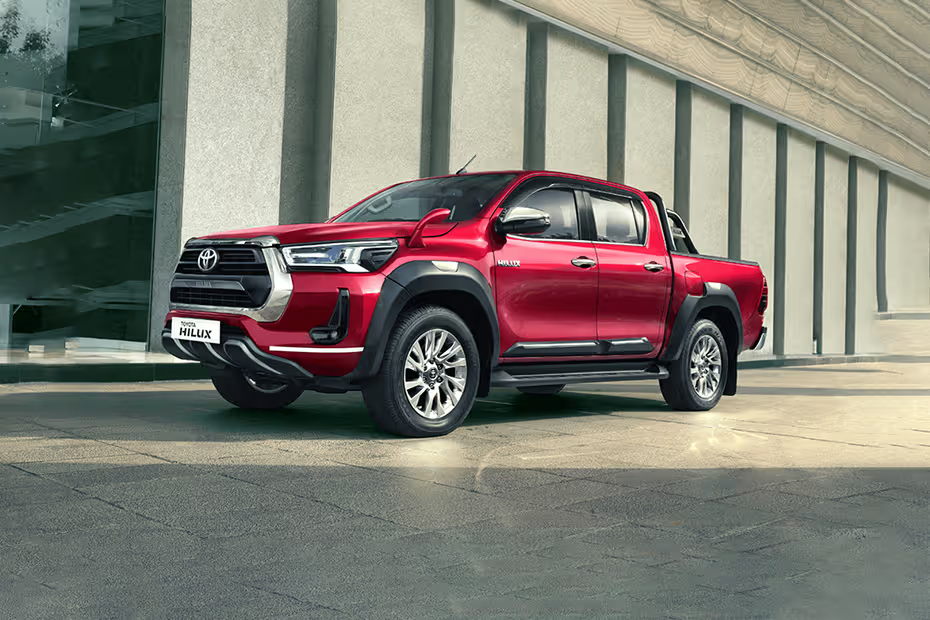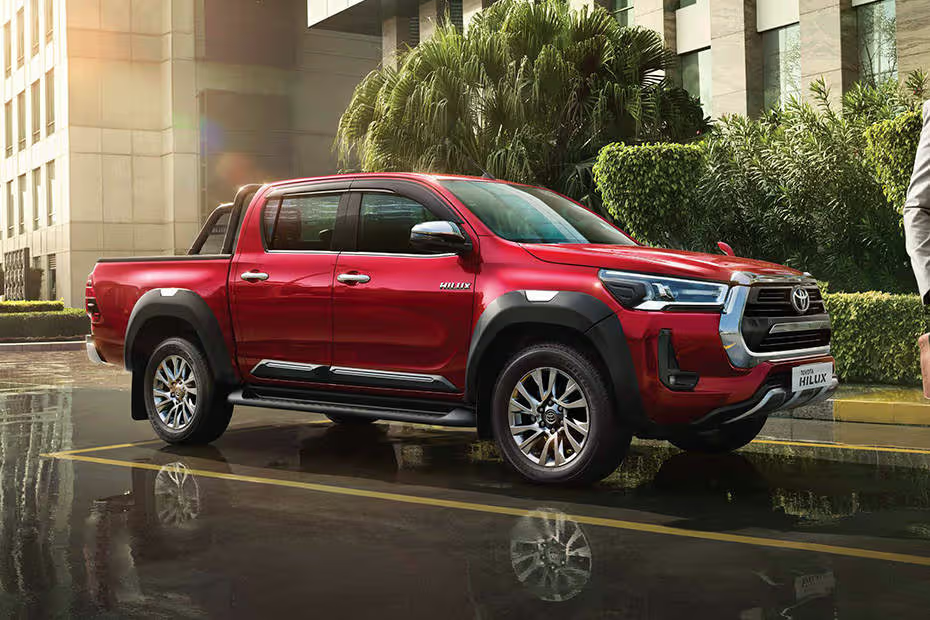If you’ve ever dreamed of a truck that laughs in the face of rough roads, extreme weather, and even a sledgehammer (yes, really), the Toyota Hilux is your answer. This legendary pickup has earned its stripes as one of the toughest vehicles on the planet, powering everything from farmers’ fields to adventure seekers’ wild escapades. Whether you’re hauling heavy loads, tackling off-road trails, or just need a reliable daily driver, the Hilux delivers without breaking a sweat.
In this comprehensive guide, we’ll dive deep into the Toyota Hilux history, its standout features, performance specs, and why it’s still a top choice in 2025. If you’re searching for a Toyota Hilux review or wondering “Is the Hilux worth buying?”, stick around—we’ve got all the easy-to-grasp details to help you decide. Let’s rev up and explore what makes this truck an icon.

A Quick Look at the Toyota Hilux: What Makes It Tick?
Before we get into the nitty-gritty, here’s the elevator pitch: The Toyota Hilux is a mid-size pickup truck that’s been around since 1968, blending rugged durability with modern smarts. It’s famous for its “indestructible” rep—think surviving desert rallies, war zones, and that infamous 2003 Top Gear episode where Jeremy Clarkson couldn’t destroy one.
Today, the eighth-generation Hilux (launched in 2015 and updated through 2025) offers diesel and petrol engines, 4×4 options, and a payload capacity that rivals bigger trucks. Starting at around $30,000 (depending on your region), it’s affordable toughness wrapped in a no-nonsense package. Perfect for work, play, or both.
The Epic History of the Toyota Hilux: From Humble Beginnings to Global Legend
The story of the Toyota Hilux starts in post-war Japan, when Toyota needed a vehicle to help rebuild the economy. In 1968, the first Hilux rolled off the line as a simple, lightweight pickup based on the Crown sedan platform. It had a basic 1.9-liter engine and rear-wheel drive—nothing fancy, but it was tough and cheap to produce.
Fast-forward to the 1970s: The Hilux went global, hitting markets in Australia, Africa, and the Middle East. Its second generation (1972) introduced a bigger 2.0-liter engine and optional 4×4, making it a hit for farmers and miners. By the 1980s, it was starring in Dakar Rallies, proving its off-road chops.
The real fame exploded in the 1990s and 2000s. The fifth-gen Hilux (1988-1997) added turbo-diesels for better power, while the sixth (1997-2004) got a facelift with smoother styling. But it was the seventh generation (2004-2015) that sealed its mythos. Remember that Top Gear test? They submerged it, set it on fire, and dropped it from a crane—yet it still drove away. No wonder it’s been a go-to for aid workers, militaries, and even insurgents worldwide.
In 2015, the current eighth-gen debuted with sleeker lines, advanced tech, and Euro 6-compliant engines to meet stricter emissions rules. By 2025, Toyota has refined it further with hybrid assists in some markets and enhanced connectivity. Over 18 million units sold globally— that’s the Toyota Hilux history in a nutshell: evolution without losing its unbreakable soul.

Design and Build: Simple, Strong, and Ready for Anything
One glance at the Toyota Hilux tells you it’s built like a tank. Its boxy, utilitarian design hasn’t changed much over the decades because it works. The 2025 model measures about 213 inches long with a 123-inch wheelbase, giving it a stable stance for towing up to 7,700 pounds.
Under the skin, high-tensile steel frames the body, shrugging off dents and rust like a pro. The ladder-frame chassis is overbuilt for abuse, with reinforced bumpers and skid plates for off-roading. Choose from single-cab, extra-cab, or double-cab setups—the latter seats five comfortably while leaving room for gear in the 5-foot bed.
Aesthetics? It’s no luxury SUV, but LED headlights, chrome accents, and 17- to 18-inch alloy wheels add a touch of modern flair. In short, the Hilux’s design screams “get the job done,” whether that’s loading hay bales or navigating city streets.
Engine Options and Performance: Power That Punches Above Its Weight
What powers this beast? The Toyota Hilux specs shine in the engine bay. Most markets get the workhorse 2.8-liter turbo-diesel four-cylinder, pumping out 201 horsepower and 369 lb-ft of torque. Paired with a six-speed automatic or manual transmission, it hits 0-60 mph in about 10 seconds—not sports-car quick, but plenty for merging onto highways with a trailer.
For greener vibes, the 2025 Hilux offers a mild-hybrid version in Europe, adding electric boost for better fuel economy (around 30 mpg combined). Petrol fans can opt for the 2.7-liter inline-four (164 hp), ideal for lighter duties.
Handling-wise, it’s no corner-carver, but the suspension—coil springs in the rear for the Invincible trim—keeps it planted. Fuel efficiency hovers at 25-35 mpg, depending on the setup, making it a smart pick for long hauls. If you’re eyeing a Toyota Hilux performance review, know this: It’s not about speed; it’s about relentless reliability.

Safety Features: Protection You Can Count On
Toyota doesn’t skimp on safety in the Hilux. The 2025 model earns top marks from Euro NCAP with seven airbags, including a driver’s knee bag. Standard tech includes autonomous emergency braking, lane departure warnings, and adaptive cruise control on higher trims.
The Toyota Safety Sense suite adds blind-spot monitoring, rear cross-traffic alert, and hill-start assist—crucial for off-roaders. With a five-star rating in most crash tests, it’s family-friendly despite its rugged image. Parents towing kids to soccer? The Hilux’s got your back.
Off-Road Prowess: Conquering Trails Like a Champ
Ask any overlander, and they’ll say the Toyota Hilux off-road capabilities are legendary. The 4×4 system with low-range gearing and rear diff lock lets it crawl over rocks at 2 mph or ford 27 inches of water. Ground clearance tops 11 inches, and approach/departure angles beat most competitors.
In the Invincible or Conquest trims, you’ll find all-terrain tires, Bilstein shocks, and a locking center diff for sand dunes or muddy tracks. It’s no surprise the Hilux dominates events like the Australian Outback Challenge. For urban adventurers, the part-time 4×4 switches seamlessly to 2WD for better mileage.
Interior Comfort: Practicality Meets Everyday Ease
Step inside, and the Hilux surprises with its no-frills comfort. Cloth or leather seats (depending on trim) are supportive for long drives, with 40/60 split-folding rear benches in double-cabs. The cabin feels airy thanks to big windows and an optional moonroof.
Tech highlights include an 8-inch touchscreen with Apple CarPlay/Android Auto, Bluetooth, and a six-speaker audio system. Climate control, USB ports galore, and a 60/40 split tailgate make it user-friendly. Sure, it’s not as plush as a Ram 1500, but for a work truck, it’s a cozy command center.
Toyota Hilux Variants and Trims: Pick Your Perfect Match
The Hilux lineup caters to everyone:
- Workmate: Base model for fleets—steel wheels, manual trans, essential features. Starts at $30K.
- SR/SR5: Mid-tier with auto trans, cruise control, and alloy wheels. Great value at $35K-$40K.
- Rogue/Conquest: Off-road focused with snorkels, roof racks, and premium audio. Around $45K.
- Invincible: Top-dog luxury with leather, navigation, and adaptive suspension. Tops $50K.
Global variants like the Revo (Thailand) add spicy styling, while the GR Sport (2025 debut) brings sport-tuned suspension for thrill-seekers. No matter the trim, every Hilux shares that bulletproof DNA.
Pros and Cons: The Honest Toyota Hilux Review
Pros:
- Unmatched durability and resale value—Hiluxes often outlast their owners.
- Versatile for work, towing (3.5 tons braked), and play.
- Low running costs and widespread parts availability.
- Strong warranty (5 years/100,000 miles standard).
Cons:
- Ride can feel truck-like on highways (bouncy with leaf springs).
- Base models lack some modern gadgets.
- Not the quietest cabin—diesel clatter is noticeable.
- Fuel economy lags behind full-size rivals in petrol form.
Overall, the pros crush the cons for most buyers.
Price, Availability, and Buying Tips in 2025
In the US (where it’s sold as the Tacoma’s cousin), expect $30,000-$55,000 new. Australia and Europe see similar pricing, with incentives for business buyers. Used Hiluxes? A 2018 model goes for $20K-$30K and drives like new.
Shop smart: Test off-road if possible, check for rust in salty climates, and prioritize diesel for torque. With Toyota’s hybrid push, future Toyota Hilux hybrid models could shake things up—watch for 2026 announcements.
Why the Toyota Hilux Deserves a Spot in Your Garage
The Toyota Hilux isn’t just a truck; it’s a statement of grit and ingenuity. From its gritty origins to today’s tech-savvy updates, it proves that simple engineering beats flashy hype every time. If reliability is your north star, this pickup will haul you through life’s toughest jobs—and the fun ones too.
Ready to join the Hilux faithful? Head to your local dealer or browse online inventories. Got questions on Toyota Hilux specs or comparisons? Drop a comment below—we’d love to chat. Drive safe, and remember: In the world of pickups, the Hilux doesn’t just survive; it thrives.

